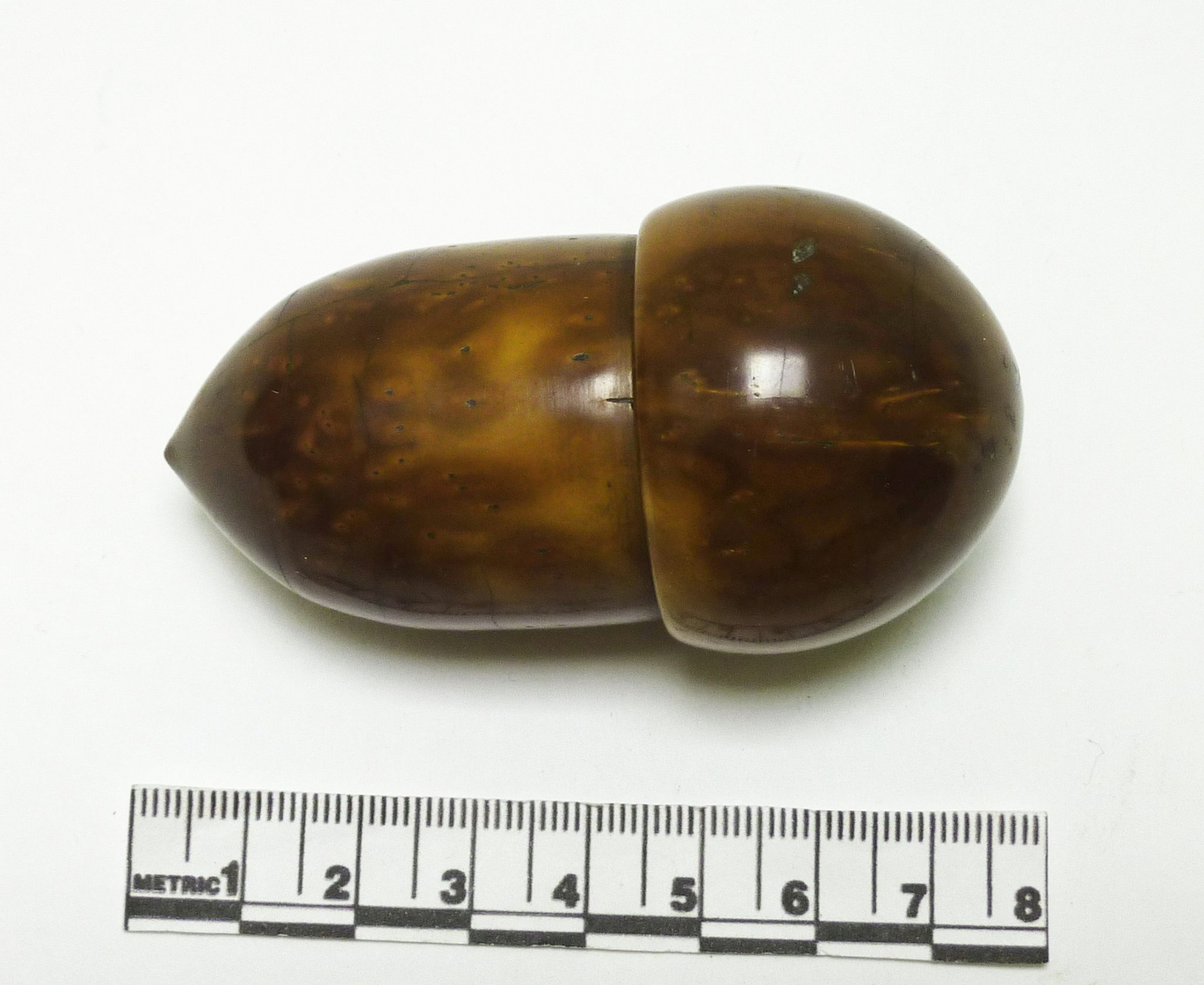
296 – Acorn shaped box
- Physical description:
- Small wooden box in the shape of an acorn. The cup unscrews, revealing that the acorn is hollow inside.
- Museum classification:
- Spells & Charms
- Size:
- 78mm
- Information:
 This hand made acorn unscrews and is hollow inside. Written charms and substances are secreted inside. The applications for this type of witchcraft in the Southwest are endless. Comes under the heading: - open - fill ' shut and hide magic. (Adapted from text by Cecil Williamson)
This hand made acorn unscrews and is hollow inside. Written charms and substances are secreted inside. The applications for this type of witchcraft in the Southwest are endless. Comes under the heading: - open - fill ' shut and hide magic. (Adapted from text by Cecil Williamson)
This is likely originally to have been a nutmeg grater, with a metal grater attached inside - the graters often get detached and lost; the 'wood' it is made of is probably coquilla nut (information provided by visitor to the museum.)
See also 1801.
The Lovett Collection in the Cuming Museum has a number of acorn-shaped artefacts (cord-pulls etc.), which according to Edward Lovett were believed to protect from lightning. Acorns from the ancient Allerton oak in Liverpool were traditionally used as protection charms (information provided by Caroline-Rose-Aline Cholmodeley).Likely related to Document 8056 which reads: "This finely carved and polished nut, worked in the shape of an acorn, unscrews and is hollow inside. This item was a wise man's cure all for breast troubles of every sort. A specially prepared ointment was kept inside the acorn for application to the breast. From Dorchester, Dorset."
- Resource:
- Object
- Materials:
- Wood
- Copyright ownership:
- Copyright to The Museum of Witchcraft Ltd.
 This hand made acorn unscrews and is hollow inside. Written charms and substances are secreted inside. The applications for this type of witchcraft in the Southwest are endless. Comes under the heading: - open - fill ' shut and hide magic. (Adapted from text by Cecil Williamson)
This hand made acorn unscrews and is hollow inside. Written charms and substances are secreted inside. The applications for this type of witchcraft in the Southwest are endless. Comes under the heading: - open - fill ' shut and hide magic. (Adapted from text by Cecil Williamson)
This is likely originally to have been a nutmeg grater, with a metal grater attached inside - the graters often get detached and lost; the 'wood' it is made of is probably coquilla nut (information provided by visitor to the museum.)
See also 1801.
The Lovett Collection in the Cuming Museum has a number of acorn-shaped artefacts (cord-pulls etc.), which according to Edward Lovett were believed to protect from lightning. Acorns from the ancient Allerton oak in Liverpool were traditionally used as protection charms (information provided by Caroline-Rose-Aline Cholmodeley).
Likely related to Document 8056 which reads: "This finely carved and polished nut, worked in the shape of an acorn, unscrews and is hollow inside. This item was a wise man's cure all for breast troubles of every sort. A specially prepared ointment was kept inside the acorn for application to the breast. From Dorchester, Dorset."